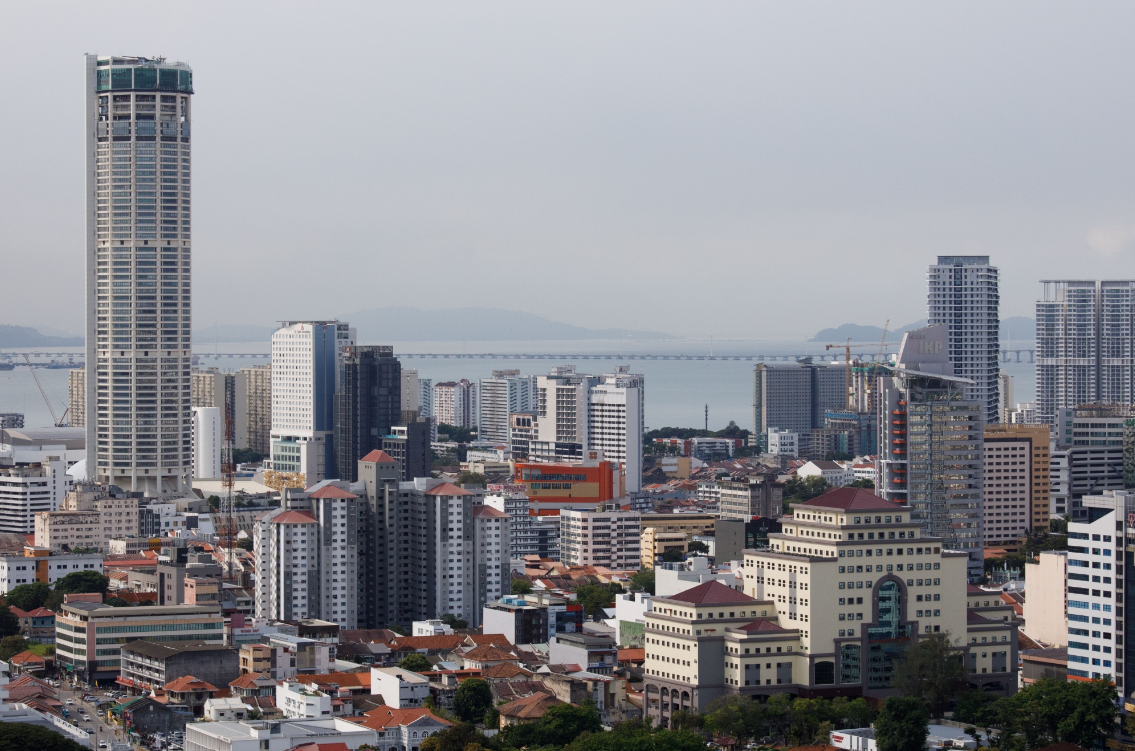


George Town, Penang, Malaysia. Photographer: Samsul Said/Bloomberg
Malaysia aspires to turn an island best known for its heritage sites into a global chipmaking hub. But first…
Surging ambition
The scenic island of Penang is best known for its well preserved colonial-style mansions, shophouses and traditional Chinese temples that date back to the 19th century.
But only a stone’s throw away from its historic architecture and tourist hotspots — on the southeastern part of an island that’s less than half the size of Singapore — hides one of the world’s busiest semiconductor manufacturing clusters.
The density of chip factories here is a rare find anywhere on Earth. Intel Corp.’s facility is large enough to require a skybridge connection, and if you walk two blocks down from it, you’ll come upon memory chipmaker Western Digital Corp.’s huge plant. At peak hours, cars of employees jam the nearby roads bumper to bumper.
From time to time, you’ll see a 14-wheeler delivering cargo containers into the campus of an Advanced Micro Devices Inc., Micron Technology Inc., Infineon Technologies AG or Lam Research Corp. All have had a presence in Penang for years, some decades.
Now the Malaysians want more, a bigger and stronger role in the global chip supply chain to fire up the local economy and expand geopolitical influence. The secret ingredient, in the words of Prime Minister Anwar Ibrahim, is to push into the more lucrative areas from chip design to advanced packaging. The 77-year-old’s government has announced a 500 billion ringgit ($113 billion) moonshot effort for the semiconductor industry.
It’s no easy task, even when you factor in that Malaysia is already the world’s sixth-largest chips exporter and a testing and assembly powerhouse. Its chip design industry is in its infancy, at best. The US, Taiwan and Japan are building the most advanced chipmaking plants. Local universities are struggling to mint the engineering talent required to close the gap on those leaders. The challenge goes on.
But in Penang, I was immersed in an atmosphere of optimism and determination. From senior executives at chip plants to industry experts, people genuinely believe that the government support plus geopolitical tensions around the Taiwan Strait are going to offer Malaysia a once-in-a-generation opportunity to climb up the supply chain ladder.
I’m no stranger to such excitement. When I was covering the industry in China over the past decade, local chip projects easily secured eye-watering sums of government investment. Some of them went on to fail spectacularly, and the reasons were a mix of insufficient long-term planning, research getting bogged down and a helping hand from US sanctions.
In Penang’s case, things seem different. The most important distinction is that the place is already a solid and valued part of the global supply chain. Malaysia isn’t starting from scratch, many of the companies whose business it’s trying to attract are already here, and it’s aiming to evolve and upgrade rather than start something entirely new.
The growth also appears organic. The biggest chipmaking projects here are led by foreign giants such as Intel and Infineon, which have a more long-term vision for the plants. Towering cranes are piecing together the last parts of Intel’s new advanced packaging plant on the island.In Infineon’s freshly built silicon carbide factory in Kulim — Penang’s neighbor — workers in jumpsuits are making the next-generation power management chips for electric cars and AI data centers.
The government’s job is now simple: Attract more big-time overseas players, train more engineers and support more local suppliers. For Penang, the chip dream that’s been 50 years in the making is only just beginning.
Source: Bloomberg
